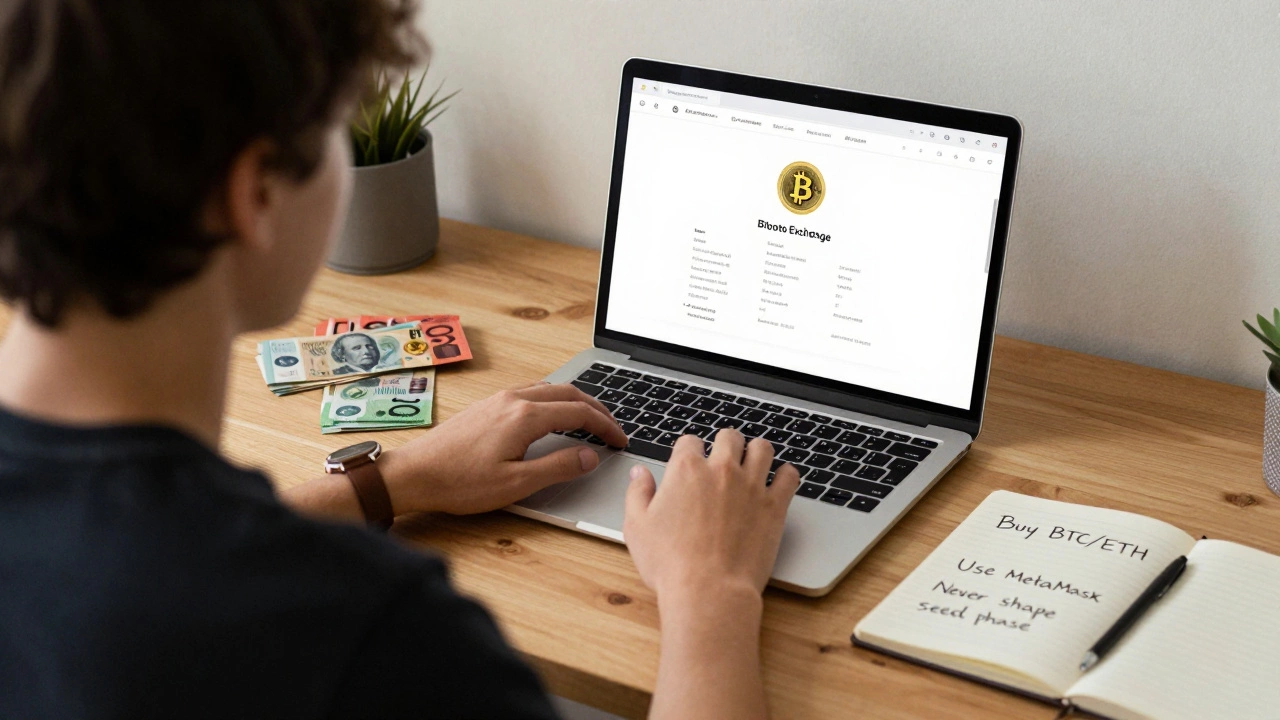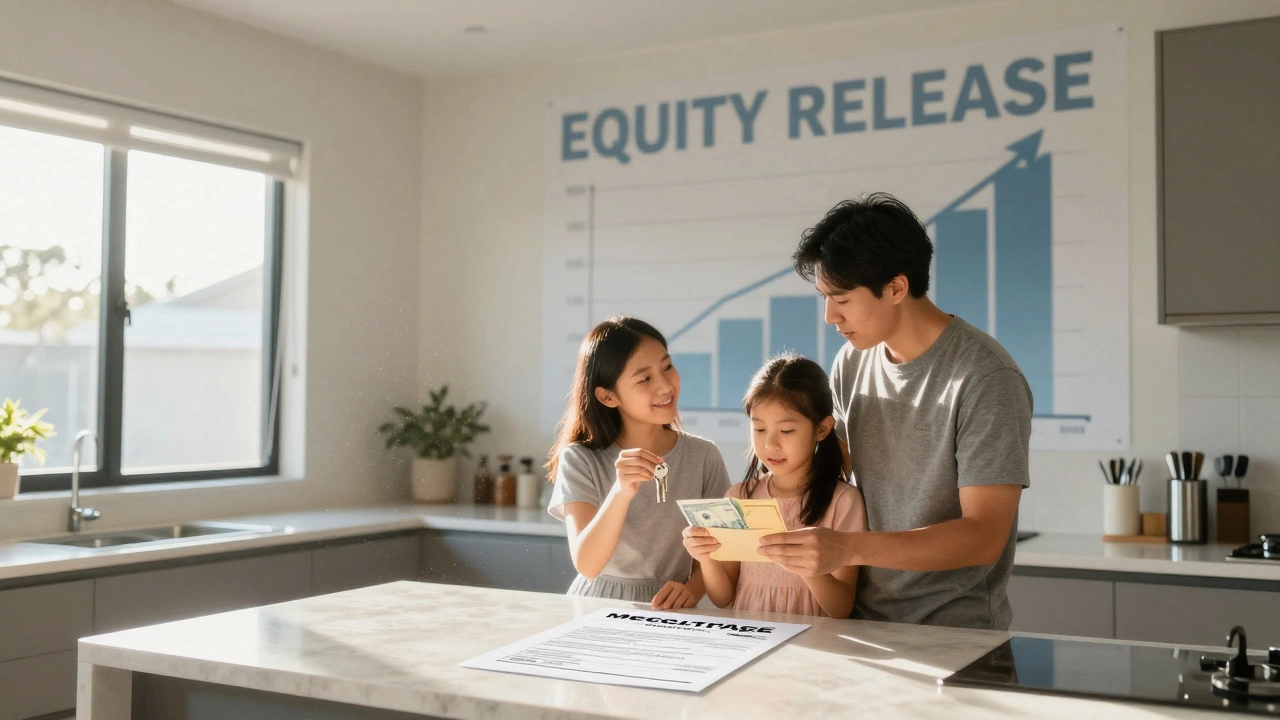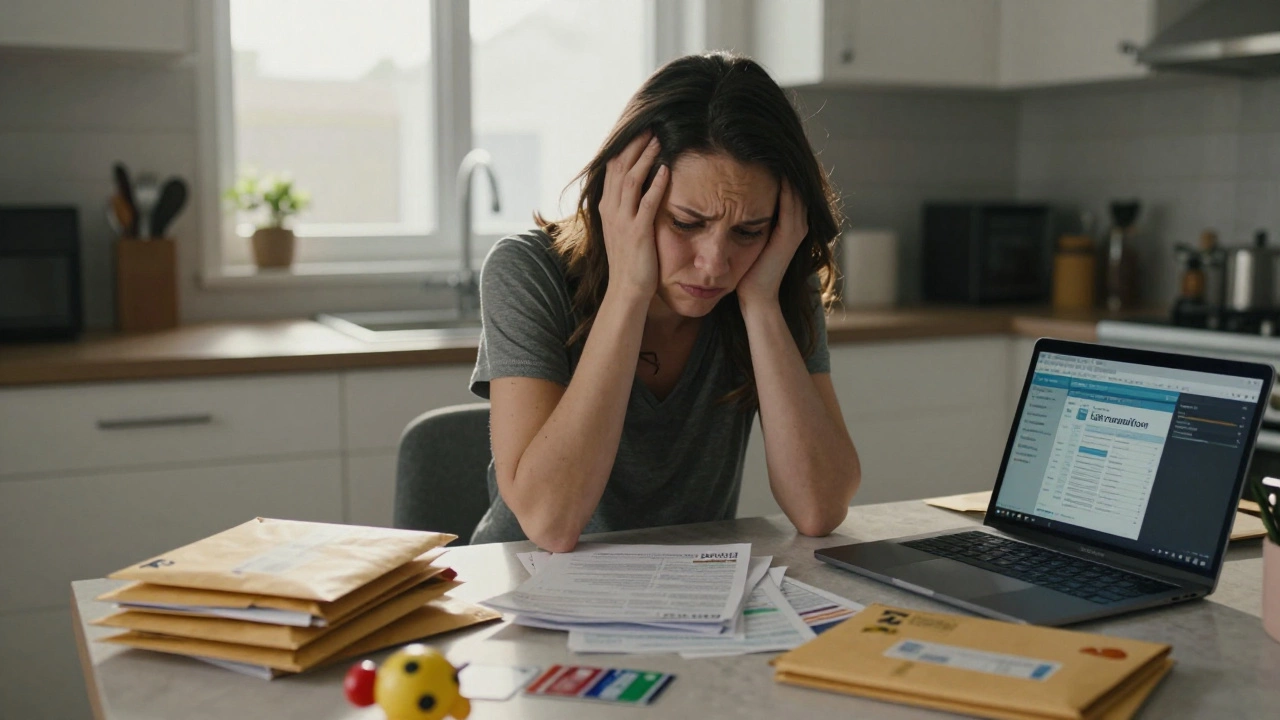Brisbane's property roller coaster has left plenty of Aussies grinning, especially when their homes are suddenly worth way more than they owe on the mortgage. Seriously, seeing your home value shoot up while your debt shrinks sounds almost too good, right? But what does it actually mean when your house is worth more than your mortgage? Is it just a warm fuzzy feeling, or can you turn that paper profit into something real?
Understanding Home Equity: What Are You Really Sitting On?
Home equity might sound like a wanky finance term, but it's actually dead simple. It's the gap between your home's market value and the meat left on your mortgage bone. Say your Brisbane house is now valued at $950,000 and you only owe $480,000 on it. That means you're sitting on a plump $470,000 slice of home equity. This isn’t just a number on a spreadsheet, either—this is actual wealth, and you have a bunch of options if you know what to do with it.
Home equity works like a piggy bank you can access as your house value goes up or you pay your loan down. But here's the kicker: it’s usually locked up until you sell, refinance, or draw on it through something like a line of credit. According to CoreLogic, Brisbane home values jumped by around 10% year-on-year in 2024, with the median dwelling price sitting above $860,000. That means homeowners like you are earning tidy sums in equity just by going about everyday life, and that growth outpaces many savings accounts by a mile.
So why does any of this matter? Building up equity strengthens your position with lenders, can help you secure lower interest rates, and gives you a buffer in rough financial times. During downturns, being in positive equity also means you’re less likely to end up 'underwater'—where your mortgage is bigger than your house’s worth. That prospect scares banks a whole lot more than it does homeowners.
Most folks, though, don’t check house prices every week. But even without obsessing over property apps, you might sense the market shift after seeing upgrades in the street or hearing stories from mates cashing out for much more than expected. If your equity is growing, there could be doors opening you haven't even considered yet.
Why Building Equity Makes a Difference for Homeowners
Having serious equity in your home changes the game. First up, lenders love borrowers with a big equity buffer. If you want to refinance or switch banks for a better mortgage deal, that equity works like a big fat security deposit. Ever tried to negotiate a lower interest rate? Telling your bank you’ve got hundreds of thousands tucked away in equity puts you in the driver’s seat. Lenders typically offer their sharpest deals to low-risk customers, and folks with nearly paid-off homes get the red-carpet treatment.
Then there’s the borrowing power. Say you want to renovate, buy an investment property, or cover hefty school fees for the kids. Instead of juggling a messy personal loan, you might be able to draw down on your equity at mortgage rates—much cheaper than most other options. This is usually done with a cash-out refinance, top-up loan, or a home equity line of credit (HELOC). For a quick snapshot, check the table below for common ways Aussies use their home equity in 2024:
| Equity Use | Typical Purpose | Average Amount (AUD) |
|---|---|---|
| Renovations | Kitchen, bathrooms, extensions | $50,000 - $200,000 |
| Investment Property | Deposit or full purchase | $100,000+ |
| Debt Consolidation | Paying off credit cards, personal loans | $20,000 - $80,000 |
| School Fees | Private education costs | $10,000 - $30,000 |
Not everyone wants to pull money out, though. A thick wall of equity means you can sleep easy if the market dips or interest rates jump again. You also cut down on the risk of owing more than your home is worth if prices take a nasty plunge—a story some remember from 2011 when parts of Queensland saw values fall.
Your equity can even help you jump into retirement. In Australia, downsizers often sell their family home, pocket a tax-free lump sum (since your main residence is usually exempt from capital gains tax), and buy something smaller, while stashing the leftovers into superannuation. It's not just a random strategy—thousands of homeowners over 60 use this plan every year. If you're thinking about doing the same, the home equity you've racked up could set you up for a much comfier future.

Refinancing, Redrawing, and Releasing: Turning Equity Into Real Money
You've watched your house value rise and your debt shrink, so now what? The main moves people consider are refinancing, redrawing, or taking out a new loan against the equity. Each has its quirks, fees, and risks, so don't dive in blind.
Refinancing involves swapping your old home loan for a new one, usually with a sweeter interest rate or better features. The kicker is, if your property has gone up, you might be able to 'cash out' a chunk of that equity as part of the deal. For example, with $470,000 in equity, a lender might let you refinance up to 80% of your home’s value—that’s $760,000—leaving you with $280,000 to use after paying off your existing loan and covering any costs. This money can land directly in your account, ready for whatever project or investment you’ve got up your sleeve.
Redraw facilities are another trick, if your mortgage allows it. Over years of paying extra off your principal, you might have a sneaky lump sum building up that you can draw back out. It's quick, easy, and you might not even need to apply again. But not all loans have this feature, so check before you plan anything wild.
Then there’s the dedicated home equity line of credit, which is more like a credit card in disguise, secured by your house. It sounds brilliant—borrow, repay, and borrow again up to your approved limit—but beware: you need discipline. With rates climbing in recent years, racking up new debts at home loan scale can get ugly, especially if house prices flatten or you lose your job.
All these moves have one thing in common: lenders want to know how stable your finances are before letting you near your equity. They’ll check your income, expenses, and any other debts. It's not just about what the house is worth—they care about your ability to make those payments, too. Mess this up, and you could end up risking your home for a dodgy investment or lifestyle splurge.
Market Fluctuations: Risks and Rewards of Riding the Property Wave
Let’s be real—Brisbane’s property scene has gone through booms and dips, sometimes within the same decade. While the last two years were bonkers for price growth, no one’s got a crystal ball. If you’re banking on your house value forever climbing, that’s risky business. Property prices can stall, or even go backwards. But having decent equity cushions you from the worst shocks.
Compared to Sydney or Melbourne’s wild rises and catastrophic falls, Brisbane’s market tends to move slower and steadier, but it isn’t immune to the bumps. According to Real Estate Institute of Queensland data, the 2022 flood season and interest rate hikes caused many suburbs to lose 5-10% in value before bouncing back in 2024. This is where positive equity becomes your safety net; if values dip, your loan is less likely to outgrow what your place is worth.
On the flip side, rapid value hikes can tempt some folks to treat their equity like Monopoly money. That’s dangerous if you over-borrow on the assumption that good times roll on forever. Bank watchdogs like APRA keep a close eye on risky lending, jumping in to limit how much banks can lend if they see a new bubble inflating. That's why there's a standard rule: most banks only let you borrow up to 80% of your property value without costly lenders mortgage insurance (LMI), a fee that protects banks, not you.
If you're thinking about using your equity, think long game. Borrowing to renovate or invest can work brilliantly if you’re disciplined and realistic about repayments. But it’s a different story if you’re using the money to cover everyday expenses or splash out on non-essential treats. As seen in the 2018 Royal Commission into Banking, plenty of Aussies got stung by misjudged loans and aggressive bank tactics. Know what you’re signing up for, make your calculations carefully, and maybe get a second opinion from a trusted mortgage broker who understands the Brisbane market.
One sneaky tip? Don’t forget about your property’s condition and street appeal. Even though the Brisbane market’s been hot, buyers get choosy if supply outpaces demand. Updates like solar panels, fresh paint, and minor landscaping can keep your house’s value humming along in a quieter patch. Think about this before listing, refinancing, or using your equity as leverage.

Strategies and Smart Moves: Making Your Equity Work For You
If you’re lucky enough to be up in equity, don’t just let it sit idle. Smart use of your** home equity** can turbocharge your finances without taking silly risks. The trick is figuring out what suits your goals, lifestyle, and appetite for debt. Here’s a straightforward look at your main moves:
- Stay put and save: Sometimes, the best bet is leaving your mortgage alone and enjoying the security. Lower loan-to-valuation means better rates, less stress if you hit a snag, and more options if you change jobs or start a business down the line.
- Renovate to add value: Kitchen and bathroom upgrades can increase comfort and boost market value if you pick your projects carefully. Don’t overcapitalise, though—ask a local real estate agent what buyers want in your suburb.
- Buy an investment property: Leveraging equity for a deposit is popular, especially in growth corridors. But look into stamp duty, rental yields, and future interest rate scenarios before signing up. If rents fall or rates rise, your cashflow might take a hit.
- Debt consolidation: Rolling high-interest debts into your home loan can save you thousands in interest. The downside? Spreading smaller debts over 20-30 years can cost more in the long run unless you make extra repayments.
- Emergency buffer: Life can throw curveballs. Redraw facilities or lines of credit, kept in reserve, can bail you out in a crisis, whether it’s redundancy, health scares, or major repairs.
No matter the path, always double-check fees and penalties. Early exit fees, break costs, and ongoing charges can eat into your gains faster than you expect. Use a mortgage calculator or grab a sit-down with a financial adviser who doesn’t work for a lender.
And don’t forget insurance. As your property value climbs, make sure your building cover is up to scratch. Underinsurance is common—your payout might not stretch as far as you hope if disaster strikes. Insurers base payouts on rebuilding costs, not just market prices, so stay updated with local building rates.
Being in positive equity means you’ve already won half the battle. It opens doors, cushions you from risks, and lets you play the property game your way. Just remember, every step has its pros and cons—don’t rush it, do your homework, and make sure your equity works for you instead of the other way around.









